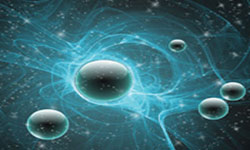Nanotechnology Used to Purify Urban Wastewater without Formation of Sludge
Iranian experts presented a new reactor in the Water and Environment Zone of Iran Nano 2012 which operates based on the performance of photocatalytic nanoparticles and can efficiently purify urban wastewater.
Among the advantages of the reactor, mention can be made of the fact that no sludge is produced during the purification process.

Three processes photocatalysis, ultrasonic, and ozonation have been used in the reactor in order to optimize the performance of the purification of pollutants existing in urban wastewater. The device is controlled digitally through the installed switches. Wastewater, approximately 5 liters in volume, enters the device through a diaphragm pump.
Then, nanoparticles are injected into the vessel through a vent installed in the upper part of the reactor. Ultrasonic device is turned on, and nanocatalyst particles are dispersed homogenously within the wastewater.
The ultrasonic waves are both able to disperse nanoparticles and to decompose pollutants in the wastewater. Ozonation device is taken into the reactor through a hatch, and is dispersed in the wastewater by a diffuser device.
Among the advantages of the implementation of this reactor in wastewater purification process, mention can be made of the lack of the formation of sludge during the process, low time of the process in comparison with the traditional methods, and the disinfection of the exit water through sonoluminescence process.
Source: Nanotechnology Now
- 443 reads
Human Rights
Fostering a More Humane World: The 28th Eurasian Economic Summi

Conscience, Hope, and Action: Keys to Global Peace and Sustainability

Ringing FOWPAL’s Peace Bell for the World:Nobel Peace Prize Laureates’ Visions and Actions

Protecting the World’s Cultural Diversity for a Sustainable Future

Puppet Show I International Friendship Day 2020

